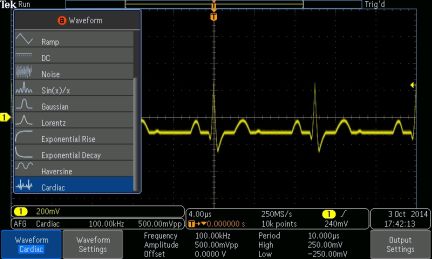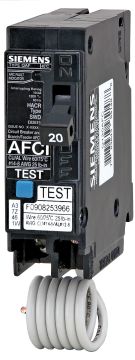Most electrical hazards fall into three categories:
Injury from electrical fire.
Exposure to a blast caused by a line-to-line or line-to-ground arc fault. Electricians working on equipment in industrial settings where fault current is high may be injured or killed when close to an arc fault event even when electrical current does not pass through the body.
Electric shock caused by current flowing through the human body. The human body is covered by an epidermal layer or skin that when dry has a relatively high resistance. This is particularly so for individuals who perform certain types of manual work that causes the skin on the hands to thicken and dry out. Work such as cleaning with soap and water can cause the skin on the hands to become thinner and moist, hence more conductive. Any cuts or abrasions greatly reduce skin electrical resistance.
Muscles connect to the brain by nerves. Tiny electrical pulses cause the muscles to contract and perform useful work. The heart is a hollow muscle, and it expands and contracts at a varying rate as needed. In conjunction with valves it pumps blood through lung sacs where carbon dioxide is removed and oxygen replenished. The blood then moves throughout the circulatory system providing oxygen and nutrients to all living cells.

A severe electric shock sending outside current through the heart can arrest it or send it into a state known as fibrillation. When this happens, the heart flutters rapidly and efficient pumping ceases. A defibrillator — a battery-powered device that administers a brief high-voltage pulse to the victim’s chest area — is sometimes effective in restoring correct heart rhythm.
Depending on the current path through the body, the heart may be unaffected. Other parts of the body become the electrical load. Because body parts have a certain finite electrical resistance, there is a voltage drop and I2R heat dissipation. The bottom line is that depending upon the duration and intensity of the shock, there will be heat rise and tissue and organ ulceration. The result can be painful, long-lasting damage.
There is another dangerous scenario when involuntary muscle contraction causes the victim to maintain a tight grip on the energized object so the shock is continuous as opposed to momentary. The electric current can cause the skin to break down and blister, losing its resistance and permitting more intense current to flow internally.
Another hazard arises when an individual, in a confined space such as an attic or crawl space, becomes wedged between an energized conductive object and a grounded conductive object. Here again the shock exposure becomes sustained.
The best protection against shock hazard is awareness. It is important to understand the effect of grounding on current flow. Electrical wiring that is being worked on should be disconnected from the source of power. It is rarely necessary to work on a live system, and workers should avoid the temptation to do so just to save a few steps in shutting down and locking out the system.
The number of electric shock fatalities has declined dramatically in recent years due to the development and more widespread use of ground-fault circuit-interrupter (GFCI) technology. GFCIs can take the form of devices that plug into the entrance panel, load centers replacing conventional circuit breakers, specialized receptacles installed in wall boxes, or devices incorporated into the power cords of such electrical equipment as hair dryers and pressure washers.
A GFCI constantly compares the amount of current flowing through the ungrounded (hot, black) conductor to the amount of current flowing through the grounded (neutral, white) conductor. If there is a discrepancy in the low milliamps range, the circuit is interrupted within a half cycle. Because shock injury is proportional to duration, the GFCI greatly reduces the severity of line-to-ground shocks.
The National Electrical Code has in recent years expanded the list of locations where it requires GFCI coverage. Generally, these locations are where wet or damp conditions coincide with the use of electricity. Examples are kitchen countertops and outdoors.
Construction workers are particularly at risk. In wet conditions such as a muddy excavation, double-insulated or properly grounded tools should be used. Better yet, battery-powered cordless tools are safer.
Equipment-grounding prongs should never be sawed off to accommodate old two-wire receptacles.
Electricians and electronic technicians working on electrical equipment should use a bench top that is insulated, never grounded or ungrounded metal. A dry rubber floor mat will lessen the worker’s ground potential, limiting the severity of line-to-ground shocks. Work boots should be dry and free of any cracks, which can hold moisture and form a conductive path to ground.
TVs, computer monitors and variable-frequency motor drives, to mention some examples, contain power supplies incorporating electrolytic capacitors. Electrolytics are particularly hazardous because of their high capacitance and relatively large available current. They will hold a hazardous charge long after their power source has been disconnected. The best policy is to discharge them through a suitable low-resistance load as opposed to shunting them out with a screwdriver. Even then, avoid touching the terminals or any related circuitry.
In the event of severe electric shock, the victim is more likely to survive if a coworker or passerby knows how to respond. Construction workers should be certified in cardiopulmonary resuscitation (CPR). This is an easier certification to obtain than emergency medical technician (EMT), which requires much more extensive training. Contrary to popular belief, CPR does not usually restore proper heart operation. What it does is to a limited extent maintain blood flow throughout the body to prevent brain death.
The strategy is first, if possible, to disengage the victim from the energized conductor. Do not attempt to pull the individual away from the power source, lest the rescuer becomes part of the circuit. It is better to shut off the power. Before beginning CPR, make sure medical help is on the way.
Many public places have defibrillators, with clear and succinct instructions in large, easy-to-read print. Also, CPR courses explain how to use the device.

Just as GFCI technology has reduced electrical shock hazard, arc-fault circuit interrupters (AFCIs) have lessened the number of electrical fires. These devices, placed in branch circuits, detect arc faults and disconnect the power before enough heat is generated to ignite nearby combustible material.
An arc fault happens in either of two situations. One is when electrical connections are poorly made or moisture gets at the joint and corrosion sets in. Another possibility is when a tradesman installing wallboard from inside, or siding from outside, drives a nail or screw through a conductor, partly severing it. This can reduce the ampacity at that point making a bottleneck for all those electrons trying to get through, or it can cause a short circuit. If a tiny air gap is created, the presence of a voltage drop will ionize the air so there is a mini-arc within the wall. Adjacent insulation can contribute to a rapid heat rise and the stage is set for an electrical fire.
AFCIs take the place of standard circuit breakers. They sit in an entrance panel or load center, monitoring the downstream wiring for series or parallel arc faults and monitoring the upstream wiring for series arc faults. They also protect against over-currents.
The AFCI device contains an additional white lead that connects to the neutral bar. Because an arc fault produces rapid and abrupt intermittent changes in the circuit current, the AFCI is able to recognize this sputtery waveform and shut down the circuit before enough heat is generated to initiate an electrical fire.
Electricians dealing with tripped AFCIs must locate and correct the arc fault before circuit operation can be restored. The temptation must be resisted to simply change the AFCI for a standard breaker, temporarily restoring operation until the arc fault at best clears itself or at worst produces enough heat to cause an electrical fire.
AFCIs are more expensive than conventional circuit breakers and add substantially to an electrical installation, but their cost must be considered mandatory. The intent of the National Electrical Code in recent cycles has been to require AFCI protection in dwellings where occupants may be at risk in the event of electrical fire. These areas have been defined ever more broadly. Currently, almost every residential location must be either GFCI or AFCI protected.
When a nail penetrates an electrical cable concealed behind wallboard or siding, the finish carpenter is often assumed to be negligent, but actually this individual couldn’t know what lies inside the wall. It is really the responsibility of the electrician to keep the wiring safe. The NEC requires that wiring be no closer than 1.25 in. from the outer edge of framing. That way, if 1.25-in. drywall screws or siding nails are used, there is no possibility of damage. Where this distance cannot be maintained, steel plates are used to protect the wiring. Two-by six-inch stud construction is helpful.
Building codes call for smoke alarms, central fire alarms, exit lights and sprinkler systems where applicable. It is the responsibility of homeowners and building managers to perform scheduled inspections and maintain these systems to ensure they will function when needed.
In commercial and industrial buildings, the presence of flammable gases, volatile liquids, flammable dust, easily ignitable air-born fibers and the like present extraordinary challenges. To mitigate these hazards, Chapter Five of the NEC on classified (hazardous) locations, contains detailed standards concerning electrical installations therein. Use of explosion-proof enclosures, rigid conduit, intrinsically safe wiring and non-sparking tools are examples. Building owners and users must properly delineate these hazardous areas. The best approach where possible is to keep electrical wiring and equipment outside these boundaries.

Leave a Reply
You must be logged in to post a comment.